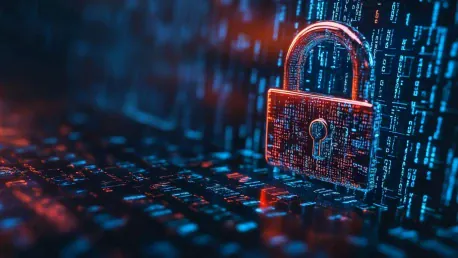Generative AI (GenAI) introduces a set of unique security challenges that distinctly diverge from those associated with traditional software systems. As these AI models continue to evolve, so do the threats and vulnerabilities they face. This constantly changing landscape makes it imperative for organizations to adopt innovative and adaptive security measures while complying with emerging regulatory standards.
The Dynamic Nature of GenAI
Continuous Learning and Adaptation
GenAI systems stand out due to their ability to learn from the data they process. Unlike traditional software operating within fixed parameters, GenAI thrives on constant learning and adaptation. This intrinsic dynamism leads to a fluctuating attack surface, making it more challenging to predict and secure against threats. Traditional security measures are generally built on the assumption of static inputs and outputs. However, GenAI disrupts this expectation by continually evolving through new data inputs, which complicates the process of maintaining rigorous security protocols. Organizations must pivot from static defenses to more dynamic and fluid security measures to keep pace with these changes.
The inherent adaptability of GenAI means that new vulnerabilities can emerge as the model learns and processes additional data. This evolving nature requires a continuous assessment of both the inputs to the AI and the outputs it generates. The traditional approach of periodic security checks is insufficient, necessitating a shift to real-time monitoring and rapid response capabilities. Moreover, this dynamic learning process complicates efforts to forecast potential threats, rendering traditional threat modeling techniques less effective. Consequently, security teams must employ advanced anomaly detection systems to identify deviations from expected behaviors, thereby mitigating risks promptly.
Multifaceted Attack Vectors
GenAI’s dynamic nature introduces a variety of attack vectors, such as model inversion attacks, training data poisoning, and prompt injection attacks. Each of these threats is uniquely complex and poses different challenges compared to traditional software vulnerabilities. For instance, model inversion attacks can be particularly hazardous, as they exploit the AI model itself to retrieve sensitive information about its training data. Training data poisoning, where malicious data skews the AI’s learning process, can lead to flawed and dangerous outputs. These diverse threats require a multifaceted approach to security, emphasizing the need for continuous monitoring and adaptive strategies.
Moreover, prompt injection attacks illustrate the complexities of securing GenAI systems from novel and intricate threats. These attacks manipulate the prompts or queries presented to the AI to elicit harmful responses or disrupt its normal operations. The multifaceted nature of these threats highlights the importance of integrating multiple layers of defense mechanisms. Security protocols must be designed to protect against the initial input phase, the model training phase, and the final output stages. Continuous validation of data integrity and real-time anomaly detection become crucial factors in maintaining a secure GenAI environment. As these systems grow more sophisticated, so too must the strategies to protect them, requiring a continuous evolution of security methodologies.
Emerging Threats and Vulnerabilities
Data Poisoning
One alarming attack surface specific to GenAI is data poisoning. When attackers introduce corrupted data during the AI model’s training phase, the compromised training data leads to flawed outcomes that may remain undetected until substantial damage is done. The insidious nature of data poisoning makes it a formidable challenge. The compromised AI model can generate outputs that deviate significantly from expected behaviors, thereby misleading decision-making processes. Vigilance in data integrity monitoring and validation is essential to mitigate this threat.
Data poisoning can undermine the foundational trust in AI systems, especially when deployed in sensitive areas such as healthcare, finance, or autonomous systems. Detecting and mitigating data poisoning involves implementing rigorous validation protocols at every stage of the data pipeline. This includes pre-training data validation, continuous monitoring during training, and post-training evaluation to ensure the integrity of the model’s outputs. Advanced techniques like differential privacy and secure multi-party computation can help protect training data from tampering, though they introduce complexity and computational overhead. The goal is to establish a robust framework that detects anomalies in the data inputs before they can corrupt the model, maintaining the reliability and safety of AI-driven decisions.
Model Extraction and Reverse Engineering
As AI becomes more embedded in critical infrastructures, the risks associated with model extraction and reverse engineering are escalating dramatically. Model extraction attacks involve duplicating the functionalities of an AI system without access to its internal workings, presenting significant intellectual property and security threats. Reverse engineering can lead to the identification and exploitation of vulnerabilities within the AI model. This makes it imperative for organizations to implement robust protections against unauthorized access and tampering, safeguarding their models from exploitation.
Model extraction threatens both the security and competitive edge of organizations relying on proprietary AI technologies. Effective defenses against model extraction include implementing rate limiting, using query-based defenses, and employing watermarking techniques to trace unauthorized copies back to their sources. Similarly, in countering reverse engineering, encrypting model parameters and obfuscating model architecture can provide additional layers of security. These measures, however, require a balance to ensure they do not degrade the performance or usability of the AI system. The integration of access control mechanisms and surveillance systems is vital to monitor for signs of potential extraction attempts, thereby enabling swift intervention to protect the integrity and confidentiality of AI models.
Adaptive and Continuous Security Measures
Persistent Vigilance and Monitoring
Given the evolving nature of GenAI, static defenses are inadequate. There’s a pressing need for persistent vigilance, ensuring that inputs and outputs are continuously validated. The dynamic attack surface of GenAI demands security strategies that are equally adaptive and resilient. Automated monitoring tools and anomaly detection systems are becoming integral in identifying and responding to potential threats promptly. By continuously tracking the behavior of AI models, organizations can detect unusual patterns and respond before any significant harm occurs.
Real-time monitoring systems are designed to keep up with the rapid pace of AI model updates, thereby providing an effective countermeasure against emerging threats. These systems utilize advanced algorithms to identify deviations from standard operational patterns, flagging potential issues for immediate investigation. Furthermore, automated response mechanisms can neutralize threats before they escalate, minimizing the impact on overall system performance. However, the reliance on automated systems also necessitates regular audits and updates to the underlying detection algorithms to ensure they remain effective against new attack vectors. Integrating human oversight with automated monitoring can provide a balanced approach, leveraging the strengths of both machine accuracy and human judgment.
Automated Penetration Testing
The rapid evolution of GenAI also necessitates automated penetration testing. Traditional pen-testing methodologies, while effective, are too slow to keep pace with the constant changes in AI models. Automated tests, capable of identifying vulnerabilities at speed and scale, are crucial. They ensure continuous protection by adapting to the evolving threat landscape without stifling the developmental pace of GenAI. However, a balanced approach that incorporates both automated and manual testing is essential to uncover complex attack vectors that might be missed otherwise.
Automated penetration testing can simulate a wide array of attack scenarios, revealing weaknesses that could be exploited by adversaries. These tests encompass everything from input manipulation to sophisticated code analysis, ensuring that security holes are identified and addressed promptly. The automated systems are particularly adept at performing repetitive tasks and large-scale simulations, providing comprehensive coverage and efficiency. On the other hand, manual penetration testing brings a human element into the equation, capable of identifying and interpreting complex, context-specific vulnerabilities that automated systems may overlook. By combining these methodologies, organizations can achieve a more thorough and nuanced understanding of their security posture, enhancing their defenses against varied and sophisticated attack strategies.
Compliance and Regulatory Hurdles
Nascent Frameworks and Guidelines
Current compliance and regulatory frameworks for GenAI are still in their early stages, often likened to the “Wild West.” However, foundational guidelines from organizations like BSI, CSA, and MITRE, as well as legislative efforts such as the EU AI Act, are beginning to shape the landscape. These emerging rules emphasize transparency, moving away from opaque “black-box” systems to those that offer clear, justifiable decision-making processes. This shift towards greater accountability and transparency is aimed at building trust and standardizing practices across the industry.
Regulatory bodies are working towards creating comprehensive guidelines that address the unique challenges posed by GenAI. These guidelines aim to ensure that AI applications adhere to ethical principles, maintain data privacy, and provide accountability for decisions made. The transition from black-box models to more transparent systems involves developing techniques that can explain AI decisions, making them understandable to non-experts. This transparency not only fosters trust among users and stakeholders but also facilitates regulatory compliance and independent audits. As these frameworks continue to evolve, organizations must stay abreast of changes and adapt their operational processes to ensure compliance with the latest standards.
Full AI Lifecycle Security
Compliance frameworks now demand that organizations secure not just the final output of AI models but also the entire data pipeline, from training models to post-deployment monitoring. This holistic approach to security ensures that vulnerabilities are addressed at each stage of the AI lifecycle. Organizations are required to implement measures that ensure the integrity, security, and explainability of AI systems. This comprehensive approach helps mitigate risks and ensures adherence to evolving compliance standards.
Securing the AI lifecycle involves several critical components, including data sanitization, secure model training environments, and continuous monitoring of deployed models. Data sanitization processes are essential to remove any biases or malicious inputs from training data, while secure environments protect the model during its development phase. Post-deployment, continuous monitoring is crucial to detect and mitigate any deviations in model performance or behavior. Implementing a full lifecycle security strategy ensures that every phase of AI development and deployment is aligned with best practices and regulatory requirements, thereby safeguarding against potential threats and enhancing the overall reliability of AI systems.
Interpretability and Accountability
Generative AI (GenAI) brings a distinct set of security challenges that differ significantly from those linked to traditional software systems. As these AI models advance, they encounter new threats and vulnerabilities that require attention. This dynamic landscape necessitates that organizations deploy innovative and adaptable security measures to keep pace. Unlike conventional software, GenAI can generate content, code, and even deceptive media, which poses unique risks.
For instance, GenAI can produce convincing deepfake videos or generate malware, making it harder to detect and mitigate security threats. These capabilities make it paramount for organizations to constantly update their security protocols. Moreover, the evolving nature of GenAI also means regulatory standards are continuously changing. Organizations must not only adopt advanced security measures but also ensure compliance with new regulations to protect themselves and their users.
Additionally, the unpredictable nature of these AI models means that traditional security measures may no longer be sufficient. Cybersecurity professionals must develop new strategies tailored to counteract the risks associated with GenAI. These measures may include enhanced monitoring, robust data validation, and continuous learning to understand and neutralize emerging threats. By staying vigilant and adaptive, organizations can better safeguard their operations and data against the unique challenges posed by generative AI.









